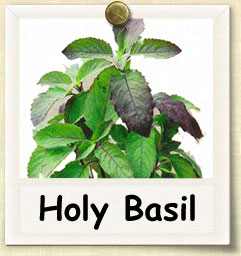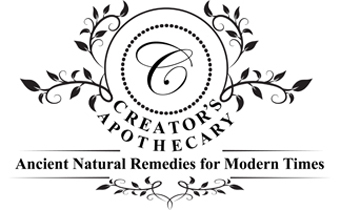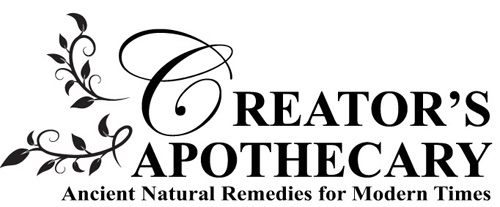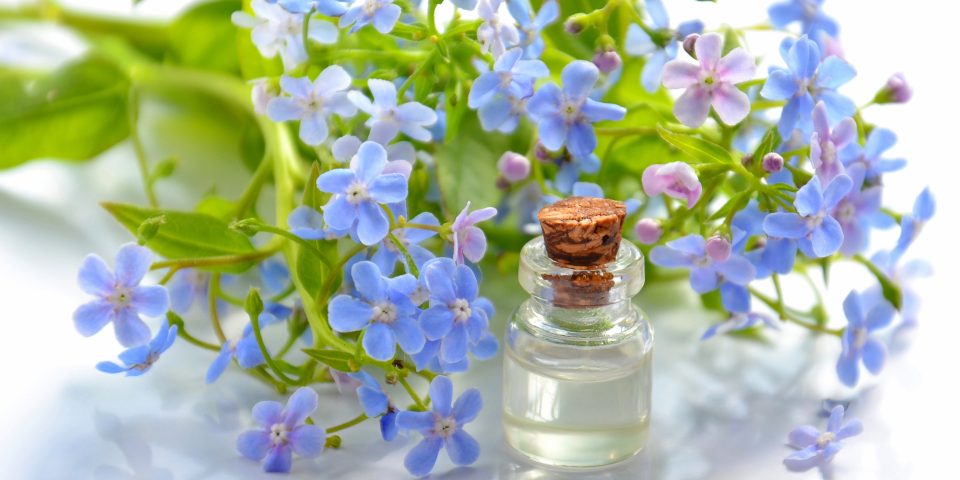Clinical Trials to Test the Effectiveness of Essential Oils
10 minutes, 48 seconds Read
Before there was an aspirin there, were herbs, barks, resins, roots, leaves, branches and plant fruit. Before the currently used form of morphine there was opium poppy. It is safe to conjecture that modern medicine takes its “roots” from herbal and folk medicine. Aspirin didn’t just grow on a tree, it was synthesized and manufactured in 1899. Acetylsalicylic acid is the main active ingredient in aspirin; salicylic acid had been used medicinally since antiquity. Medicines made from willow and other salicylate-rich plants appear in clay tablets from ancient Sumer as well as the Ebers Papyrus from ancient Egypt.12
Morphine has been derived from opium poppy plant, and isolated and synthetized. Morphine is commonly considered to be the archetypal opioid analgesic and the agent to which all other painkillers are compared. There is evidence to suggest that as long ago as 3000 B.C. the opium poppy, Papaver somniferum, was cultivated for its active ingredients. It was, however, not until morphine was isolated from opium in 1806 by Sertürner that modern opioid pharmacology was truly born. In 1847 the chemical formula for morphine was deduced. During the 20th century a number of synthetic opioids were also produced either by design or serendipitously.11
Rise of the Modern Pharmaceutical Industry

The modern pharmaceutical industry traces its origin to two sources: apothecaries that moved into wholesale production of drugs such as morphine, quinine, and strychnine in the middle of the 19th century and dye and chemical companies that established research labs and discovered medical applications for their products starting in the 1880s.10
The rise of the modern pharmaceutical company and its partnership with academic university research laboratories created a deep split between alternative herbal medicine and the growing western allopathic medicine. There was a time not so long ago when the term “alternative medicine” conjured up visions in many people’s minds of shamans, charlatans, and crackpots. In the past few years, many doctors and conventional healthcare institutions in the United States have shown a new acceptance of treatments and philosophies that historically have not been part of mainstream medicine. In fact, now the term “alternative medicine” is out, and “integrative medicine” is in. The driver behind this change in attitude is definitely patient demand for better solutions. “Patients are dissatisfied with the small amount of time they get with their doctors and with doctors who prescribe a pill for every ill,” Weil said. “The integrative medicine movement is not a rejection of conventional methods. But patients are saying that the conventional model is not working, that it’s broken. And they are right.”9
Integrative Medicine
Integrative medicine advocates state that while pills and procedures still help millions of patients, the evidence is mounting that diet and nutrition, natural therapeutics such as supplements, vitamins, herbs, and acupuncture, along with lifestyle behaviors such as exercise and smoking cessation also have a direct impact on disease. While there is still resistance in some conventional American medical circles as well as by insurers and pharmaceutical companies, there is a significant shift toward a more integrative approach to patient care as related to pain treatment. This is in part because pain can be tricky for doctors to identify and treat the root cause of the pain, and in part because of the opioid painkiller addiction epidemic in the United States. Dr. Robert Bonakdar, director of pain management at Scripps Center for Integrative Medicine in La Jolla, California, embraces many non-pharmaceutical options such as electrotherapy, tai chi, and mindfulness/meditation as well as diet and supplemental therapies such as the anti-inflammatory herbals ginger, curcumin, and boswellia. 9
Resultant from the increased demand for alternative/integrative medicine are the rise of clinical trials being performed on the use and efficacy of essential oils. Although essential oils have been used for medicinal purposes throughout the centuries, there is little published research on many of them, and often conflicting studies. Due to patient dissatisfaction with mainline medicine and new drug-resistance diseases, researchers are expanding their solution-solving outside of their normal toolbox in search of natural curative substances. Clinical trial are currently being conducted around the world in the United States, Canada, Europe, Australia, Japan, and India.
Report Center for Disease Control: Antibiotic Resistance Threats in US

The Center for Disease Control published its 2019 Antibiotic Resistance Threats in the United States, 2019 AR Threats Report, which includes the latest national death and infection estimates that underscore the continued threat of antibiotic resistance in the U.S. According to the report, more than 2.8 million antibiotic-resistant infections occur in the U.S. each year, and more than 35,000 people die as a result. In addition, 223,900 cases of Clostridioides difficile occurred in 2017 and at least 12,800 people died. The report lists 18 antibiotic-resistant bacteria and fungi into three categories based on level of concern to human health—urgent, serious, and concerning.7
Penn Medical News write, “The bacteria are winning. That’s what happens when they’re excessively attacked with the same antibiotics for 70 plus years. They get smarter and harder to defeat with the drugs… Researchers believe bacteria-fighting compounds in plants could be used, in some fashion, to help treat infections – and thus ween us away from the antibiotics.8”
While the medical/clinical sectors have not performed many trials to determine the efficacy and effectiveness of essential oils and their application/intervention in medical treatments, other verticals such as the cosmetics, food, flavoring, and tobacco industries, have amassed a significant body of research on essential oils. Obviously, these verticals and the research being conducted are in large part interested in preservative qualities, flavor or mood alteration, than in actual medically-oriented clinical trials.
Clinical Trials: Use of Essential Oil to Treat Illness and Disease
Some of the proprietary research conducted by these verticals has made it way out into cosmetic, plant product journals and even the National Center for Biotechnology Information. Increasingly, there is more clinical data available on the use of essential oils to treat illness and disease. Much of the current research has not been conducted on humans, and instead on laboratory animals, but this too, is changing.
Clinical trials, to-date, have studied essential oils for the treatment of cancer patients (anxiety, nausea, vomiting and other disease related symptoms). Studies have shown mixed, but still, encouraging results for cancer patients. Some studies reported improvements in pain, nausea, sleep, anxiety and mood, while other studies indicated no change in condition or symptoms. The article focuses on two essential oils, basil and clove, and clinical trial results for each. Basil and clove have been widely studied; below are some details of studies.
July 2003 G. Opalchenova, and D. Obreshkova conducted a clinical trial, “Comparative studies on the activity of basil–an essential oil from Ocimum basilicum L.–against multidrug resistant clinical isolates of the genera Staphylococcus, Enterococcus and Pseudomonas by using different test methods.1” The basil that was used was comprised of the following chemical properties: linalol (54.95%), methylchavikol (11.98%), methylcinnamat (7.24%) and linolen (0.14%). The researchers stated in their conclusion, “the results obtained were considered encouraging,” due to basil showing a strong inhibitory effect on the test bacteria.
Holy Basil Essential Oil: Treats Chronic Diseases: Diabetes, Metabolic Syndrome and Psychological Stress

In March of 2017, another comprehensive literature review which included Holy basil (aka Tulsi) was conducted entitled, “The Clinical Efficacy and Safety of Tulsi in Humans: A Systematic Review of the Literature.” The researchers, Negar Jamshidi and Marc M. Cohen, acknowledge the reason for the clinical review was because to-date there were no systemic reviews of basil’s clinical safety or efficacy. The review was narrowed down to 24 studies that reported therapeutic effects on metabolic disorders, cardiovascular disease, immunity, and neurocognition. All studies reported favorable clinical outcomes with no studies reporting any significant adverse events. The researched concluded that, “The reviewed studies reinforce traditional uses and suggest tulsi [holy basil] is an effective treatment for lifestyle-related chronic diseases including diabetes, metabolic syndrome, and psychological stress. Further studies are required to explore mechanisms of action, clarify the dosage and dose form, and determine the populations most likely to benefit from tulsi’s therapeutic effects.2”
Clove Essential Oil: A Potential Antimicrobial Agent for External Use

In 2012 the Brazilian Journal of Microbiology featured a trial conducted by researchers L. Nuñez and M. D’ Aquino, “Microbicide activity of clove essential oil (Eugenia caryophyllata).” Clove was studied as related to oral infections and the microorganisms selected for the biological test included, Escherichia coli, Staphylococcus aureus and Pseudomonas aeruginosa. The researchers stated, “The influence of clove essential oil concentration, temperature and organic matter, in the antimicrobial activity of clove essential oil, was studied in this paper, through the determination of bacterial death kinetics. The results obtained demonstrated that Escherichia coli were more sensitive even though the essential oil exerted a satisfactory action in three cases… Clove essential oil can be considered as a potential antimicrobial agent for external use.3
December 2017 Pharmaceutical Biology published a clinical conducted by X Han and TL Parker to explore the anti-inflammatory characteristics of clove essential oil, “Anti-inflammatory activity of clove (Eugenia caryophyllata) essential oil in human dermal fibroblasts.” Clove essential oil has been the subject of many antimicrobial/dental studies, but few studies, if any, have focused on the other therapeutic properties of the oil. Clove oil possesses antifungal, antiviral, antioxidant, anti-inflammatory and anticancer properties in addition to its antimicrobial properties. This particular study was conducted to evaluate clove oil as a topical anti-inflammatory. The researchers concluded, “This study provides important evidence of CEO [clove]-induced anti-inflammatory and tissue remodeling activity in human dermal fibroblasts. This study also supports the anticancer properties of CEO and its major active component eugenol.4”
One of the primary chemical constituents in clove essential oil is eugenol (up to 90%) which is a natural anesthetic. Eugenol is a powerful antioxidant with antibacterial and antimicrobial properties that kills bacteria, viruses and other pathogens. It helps numb and reduce pain to ease a toothache. In fact, it has been found to be as effective in oral pain relief as Orajel which contains benzocaine5. Eugenol also has natural anti-inflammatory properties. It may reduce swelling and irritation in the affected area.
Apart from a salt-water rinse or a little brandy on the affected area, there have really only been two effective methods of oral pain relief in modern history; benzocaine and clove oil. While the two have been proven by a published study in the Journal of Dentistry5 to be equally effective, many people continue to use the harsher, more risky benzocaine over the all-natural clove oil. As clove oil is a natural substance and can be used many times more than products such as Orajel. Orajel, with main active ingredient benzocaine, contains a usage warning not to exceed a dosage of four times in a 24-hour period. Benzocaine, while good for numbing, on rare occasions has been linked to a rare fatal blood disorder6 known as methemoglobinemia. Eugenol is also an ingredient in Dry Socket Paste, an over-the-counter treatment dentists recommend for teeth extraction pain.
Clove essential oil also has a number of analgesic properties. However, the one that is most associated with pain relief is a compound called beta-caryophyllene or BCP. BCP has the ability to bind with your CB2 receptor which helps relieve pain and inflammation and protect cells and tissues from further damage.

Circle Back to the Natural World God Created
It is time to go full-circle as the medical community circles back to look at what nature has to offer versus the synthetic compounds and constituents that can be crafted in the laboratory. It appears that it is time to get back to our grandmother and great-grandmother’s healing recipes from The Stillroom as we take on the modern medical challenges (not so different from the past) and new superbugs! Research continues to bear out the effectiveness of essential oils to help maintain a healthy body and lifestyle, while effectively defeating and cleansing disease, bacteria and viruses.
Grace to you and peace from God our Father and the Lord Jesus Christ. Philippians 1:2
Til next time,

REFERENCES
1 https://www.ncbi.nlm.nih.gov/pubmed/12732427
2 https://www.ncbi.nlm.nih.gov/pmc/articles/PMC5376420/
3 https://www.ncbi.nlm.nih.gov/pmc/articles/PMC3769004/
4 https://www.ncbi.nlm.nih.gov/pubmed/28407719
5 https://www.ncbi.nlm.nih.gov/pubmed/16530911
6 https://www.ncbi.nlm.nih.gov/pmc/articles/PMC307717/
7 https://www.cdc.gov/drugresistance/biggest-threats.html
9 https://www.healthline.com/health-news/alternative-medicine-becoming-mainstream#1
10 https://pubsapp.acs.org/cen/coverstory/83/8325/8325emergence.html
11 https://www.ncbi.nlm.nih.gov/pmc/articles/PMC4590096/
12 https://en.wikipedia.org/wiki/History_of_aspirin




